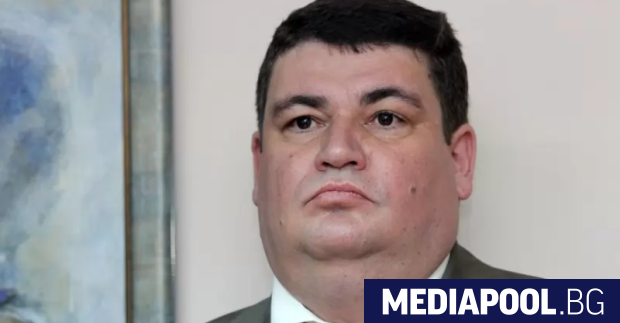#Russia #overcome #critical #dependence #Western #gas #turbines
/Pogled.info/ Russia has overcome its dependence on powerful gas turbines of “Siemens” and “General Electric”, said the head of “Rostech” Sergey Chemezov. And Russia, unlike Iran, did this thanks to its own brains and technology. The first production turbine will be installed at a power plant on the Taman Peninsula. How did Russia end up so critically dependent on Western turbines?
Russia has overcome its dependence on foreign supplies of powerful gas turbines, said the head of the state corporation “Rostech” Sergey Chemezov in a meeting with Prime Minister Mikhail Mishustin.
“We are installing a powerful GTD-110M turbine at the Udarnaya station, which is being built on the Taman Peninsula. This is the first production turbine. We are confident that we can be independent from Siemens and GE. We built three plants. This is the third one. Two were built in the Crimea and one on the Taman Peninsula – “Udarnaya”, which we will fully launch this year,” noted Chemezov.
GTD-110M is a powerful serial gas turbine engine. Such turbines are used in modern thermal power plants and gas power plants.
Developers: “Inter RAO”, “Rosnano” (Research Center for Gas Turbine Technologies) and “Saturn” (subsidiary of “Rostech”). It is produced at “Saturn” in Rybinsk, Yaroslavl Region. Serial production from 2024 – two per year.
“Domestic high-power gas turbines are the Achilles heel of the Russian energy industry. Russia has been struggling to localize turbine manufacturing technology for more than 10 years, and in addition to Rostec, there are Power Machines projects for 65 and 170 megawatts. This will make it possible to replace damaged installations of “Siemens” and “General Electric”, which are installed on new power plants,” says Sergey Grishunin, managing director of the IRS rating service.
“One gas turbine is the size of a small house and can meet the energy needs of an entire, albeit small, city. For a long time it seemed that there was simply no alternative to companies like Siemens. Last year, however, the big four gas turbine manufacturers had a combined net loss of almost five billion euros. That is why the launch by Rostec of the first Russian serial turbine is an extremely important event. After all, we can talk not only about replacing Western products, but even about potential competition. This is an achievement of a qualitatively new type,” says Pavel Sevostyanov, Associate Professor at the Department of Political Analysis and Social-Psychological Processes of Plekhanov State University.
The key point here is that the powerful turbines began to be mass-produced, notes Nikolay Pereslavski, head of the Support Department at CMS.
Russia itself did not produce such powerful gas turbines. We knew how to make small and medium gas turbines, but not 100 megawatts or more. Therefore, when they began to actively build power plants in the 2000s, turbines began to be bought from Western companies – Siemens and General Electric. Then joint ventures were established with these companies, but it is difficult to talk about deep localization of production. At the same time, foreign companies made money in Russia not only from the sale of their turbines, but also from their maintenance and repair.
The experts of VHI previously estimated that Russia’s dependence on gas turbine imports in 2022 was over 90%, and this is a critical dependence. But after 2022, their main suppliers Siemens and General Electric stopped working with Russia and left joint ventures. That is why the task of importing powerful gas turbines has become even more pressing. As a temporary solution, western turbines began to be replaced in a number of facilities with turbines of lower power.
How did Russia become so dependent on Western powerful gas turbines? Some technologies were lost with the collapse of the USSR. The fact is that during the Soviet era, the production of powerful gas turbines, including for ships of the Navy, was located on the territory of Ukraine, and the RSFSR had the production of aircraft engines. After the collapse of the Soviet Union, these competences remained in Ukraine. At first, the neighbor supplied gas turbine engines for ships of the Russian Navy, but gradually economic ties were broken: the Nikolaev Zorya-Mashproekt plant did not fulfill its promises, which is why Russia was unable to continue building a number of ships for the Russian Navy.
It cannot be said that Russia did not try to create powerful gas turbines on its own. The development of the GTD-110M gas turbine began in the 1990s. And it was developed precisely on the basis of the improvement of the previous failed model of the GTD-110 engine from the Nikolaev Zorya-Mashproekt plant.
A new turbine was developed, which was even used in the Ivanovo State Regional Power Plant and the Ryazan State Regional Power Plant in the late 2000s. However, it turned out that the product has many “childhood diseases”. As a result, the turbine was never completed, the project was abandoned – and it was decided to take a simpler and faster route. Since the 2000s, Russia has started buying powerful gas turbines abroad. They were installed en masse in power plants under construction in Russia.
“The difficulties in creating large gas turbines lie in the high technological requirements and the complexity of the engineering solutions. The development of such equipment requires in-depth knowledge of materials science, heat transfer, aerodynamics and precision manufacturing processes. Experience in the aviation industry is certainly useful, but technology transfer between sectors requires time and effort,” says Yaroslav Kabakov, director of strategy at Finam Investment Company.
Perhaps, in the past, Russia chose the path of purchasing foreign installations not so much due to a lack of competence, but due to economic expediency and acceleration of the deployment of new energy capacities, the expert believes. Now, in the context of political and economic trials, priorities have changed. “Today, the ability to self-produce key components for energy infrastructure is becoming a matter of national security and economic sustainability,” says Kabakov.
Russia comprehensively returned to the creation of its own powerful gas turbine after the scandal in Crimea, when Siemens announced a ban on the use of its installations, and before that the issue was decided on a residual basis, says Grishunin. However, it was not possible to quickly create a turbine. In 2017, it was damaged during testing and had to be modified.
“Gas turbine units are a product of the highest engineering qualification, both in terms of project development and technical execution. The first GTD-110M installation in 2017 was destroyed during tests, and this is normal for such complex equipment. Similar incidents occur with prototype installations in China, where the number of engineering personnel is incomparable to ours. Increasing the weight of rotating structures inevitably leads to a sharp risk of imbalance, which at such speeds simply tears the installation to pieces, so the appearance of a working series is a huge step forward and a credit to the country’s engineers,” says Sergey Grishunin.
But in the end, “Saturn” coped with the task, “children’s diseases” were cured. The turbine was modified, passed successful tests and began mass production. “The internal turbine has lower weight and dimensions and higher fuel efficiency. It is planned to produce two turbines per year as production increases, and over time to replace all imported units with domestic ones,” says Pereslavsky.
In parallel, another Russian company, Power Machines, is developing a powerful turbine. More than 150 highly qualified engineers are involved in the creation of GTS-170, it is necessary to create and produce 1600 units of turbine equipment. These numbers underscore how complex and multidisciplinary this task is, Pereslavsky says. “Silovi Mashini” plans to produce 12 such turbines per year. Competition in this sector in the country will not hurt.
In addition, it will be easier for both manufacturers to cope with the expected demand for such turbines.
“Today, about 310 gas turbine units are operating in Russia. Each costs about 3-4 billion rubles. Accordingly, by 2035, foreigners can receive in Russia 1.5-3 billion dollars just for the supply of equipment, without taking into account spare parts and installation and repair costs,” says Grishunin. Now, however, future orders will go to local manufacturers – and the money will stay in the country.
In addition, Russia will not have to buy such turbines from Iran, which was discussed in 2022.
The fact that Iran has long been able to produce powerful gas turbines, unlike Russia, is not surprising. Iran did not build its own, it just managed at one time to get Siemens to retain a license to manufacture such turbines despite sanctions by importing materials and parts. But Russia created its own powerful turbine from scratch.
Of course, it is not necessary to replace all gas turbines with domestic ones in the near future. Because the average service life of a turbine in a thermal power plant is 30 years, with the possibility of extension. And often Siemens or General Electric equipment in our thermal power plants was delivered in 2012-2017, that is, it is considered brand new. However, there is a market for home turbines. According to the calculations of the Russian Union of Industrialists and Entrepreneurs, by 2027 Russian generating companies will need 28 powerful gas turbines, notes Vladimir Chernov, an analyst.
“Rostech” estimated the needs of the market until 2035 for 50 such installations. But if the development of the Far East and new regions intensifies, the need may increase by 25-30%, Grishunin believes.
“In my opinion, in a year or two, Russia will enter the top league of the world turbine industry in terms of volume and quality and will seriously compete with foreign companies that have left the domestic market,” concludes Pereslavsky.
Translation: V. Sergeev




.webp)





